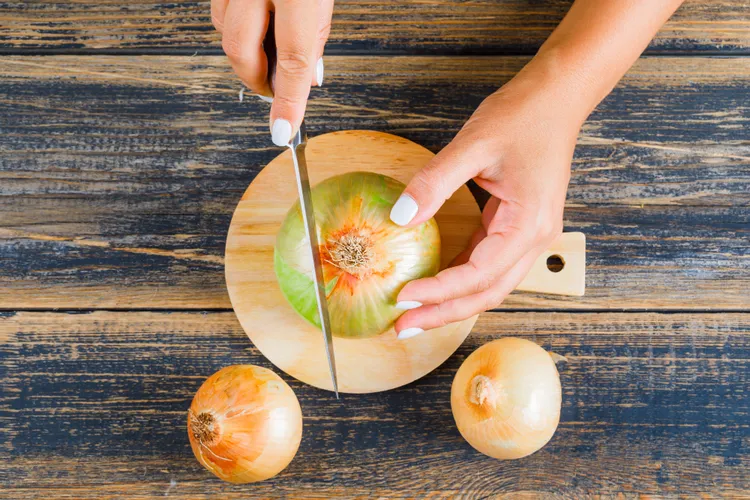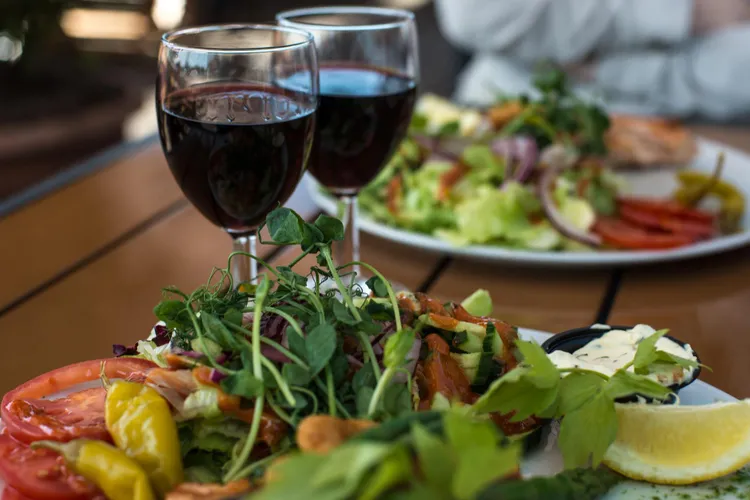10 Diet Foods That Can Secretly Make You Gain Weight
When you’re trying to lose weight or maintain a healthy lifestyle, “diet foods” often seem like the go-to choice. Marketed as low-calorie, low-fat, or healthy alternatives, these foods promise to help you shed pounds without sacrificing flavor. But here’s the catch: many of these so-called healthy options can actually sabotage your weight loss goals. Hidden sugars, sneaky portion traps, and misleading labels can lead to unintended weight gain, leaving you frustrated and confused. We’ll uncover 10 diet foods that might be working against you, explain why they can lead to weight gain, and offer smarter alternatives to keep your health journey on track. Let’s dive in and expose the culprits!

- Low-Fat or Fat-Free Yogurt
Why It Can Make You Gain Weight: Low-fat or fat-free yogurts are often marketed as a healthy breakfast or snack, but many are loaded with added sugars to compensate for the lack of fat. A single serving of flavored low-fat yogurt can contain 15-20 grams of sugar, spiking your blood sugar and triggering cravings. Additionally, the lack of healthy fats can leave you feeling less satisfied, leading to overeating later.
Smarter Alternative: Choose plain, full-fat Greek yogurt. It’s higher in protein and healthy fats, which promote satiety, and has minimal added sugars. Add fresh berries or a sprinkle of nuts for natural sweetness and texture.
Tip: Check the ingredient list for added sugars (like high-fructose corn syrup or cane sugar) and aim for yogurts with live cultures for gut health benefits.
- Granola and “Healthy” Cereals
Why It Can Make You Gain Weight: Granola and cereals labeled as “whole grain” or “low-fat” often sound nutritious, but they can be calorie-dense and high in sugar. A small serving of granola (about 1/4 cup) can pack 150-200 calories, and many people pour much larger portions. The combination of refined carbs and sugars can cause rapid blood sugar spikes, leading to hunger soon after eating.
Smarter Alternative: Opt for unsweetened oatmeal or a low-sugar, high-fiber cereal like bran flakes. Pair with a protein source like Greek yogurt or a boiled egg to stabilize blood sugar and keep you full longer.
Tip: If you love granola, make your own with oats, nuts, and a touch of honey, and stick to a 2-3 tablespoon serving.
- Diet Sodas and Zero-Sugar Drinks
Why It Can Make You Gain Weight: Diet sodas and zero-sugar drinks are marketed as calorie-free alternatives to sugary beverages, but their artificial sweeteners (like aspartame or sucralose) can disrupt your metabolism. Studies suggest artificial sweeteners may increase appetite and cravings for sweet foods, leading to overeating. Plus, these drinks offer no nutritional value, so they don’t contribute to satiety.
Smarter Alternative: Drink plain water, sparkling water with a splash of lemon or lime, or unsweetened herbal teas. These hydrate without triggering cravings or adding empty calories.
Tip: If you crave fizz, try naturally flavored sparkling water with no artificial sweeteners. Check labels to avoid hidden additives.
- Smoothies and Smoothie Bowls
Why It Can Make You Gain Weight: Smoothies are often hailed as a healthy meal replacement, but store-bought or café versions can be calorie bombs. Packed with fruit juices, sweetened yogurt, honey, or even ice cream, a single smoothie can contain 500-800 calories. Even homemade smoothies can lead to weight gain if you overload on high-sugar fruits or calorie-dense add-ins like nut butters without balancing with protein or fiber.
Smarter Alternative: Make your own smoothies with a balance of protein (Greek yogurt or protein powder), healthy fats (avocado or a small amount of nuts), and low-sugar fruits like berries. Add leafy greens like spinach for fiber and nutrients.
Tip: Keep portion sizes in check - aim for 8-12 ounces per smoothie and treat it as a meal, not a drink on top of other food.
- Rice Cakes and Low-Calorie Snacks
Why It Can Make You Gain Weight: Rice cakes and similar “low-calorie” snacks are often marketed as diet-friendly due to their low calorie count (around 35-50 calories per cake). However, they’re typically made of refined carbs with little fiber or protein, leading to quick digestion and hunger soon after. This can prompt you to eat more to feel satisfied, increasing overall calorie intake.
Smarter Alternative: Choose snacks with staying power, like a small handful of almonds, a hard-boiled egg, or sliced veggies with hummus. These provide protein, healthy fats, and fiber to keep you full.
Tip: If you enjoy rice cakes, top them with a smear of avocado or almond butter for added nutrients and satiety.
- Salad Dressings (Low-Fat or Fat-Free)
Why It Can Make You Gain Weight: Low-fat or fat-free salad dressings sound like a healthy choice, but they often replace fat with sugar, sodium, or thickeners to maintain flavor and texture. A 2-tablespoon serving can contain 10-15 grams of sugar and 300-500 milligrams of sodium, which can lead to water retention and cravings. Plus, healthy fats in dressings help absorb fat-soluble vitamins (like A, D, E, and K) from vegetables, so skipping them reduces the nutritional value of your salad.
Smarter Alternative: Make your own dressing with olive oil, balsamic vinegar, lemon juice, and herbs. If buying store-bought, choose full-fat dressings with minimal ingredients and no added sugars.
Tip: Use 1-2 tablespoons of dressing and toss thoroughly to coat your salad evenly, maximizing flavor with fewer calories.
- Protein Bars and Energy Bars
Why It Can Make You Gain Weight: Protein bars are often marketed as healthy snacks or meal replacements, but many are essentially candy bars in disguise. Packed with added sugars, artificial ingredients, and sometimes as many calories as a dessert (200-300 calories per bar), they can contribute to weight gain if eaten mindlessly. Some bars also lack sufficient fiber or protein to keep you full.
Smarter Alternative: Choose bars with at least 10 grams of protein, 5 grams of fiber, and less than 5 grams of added sugar. Better yet, snack on whole foods like a handful of nuts or a piece of fruit with a slice of cheese.
Tip: Read the nutrition label and ingredient list carefully - avoid bars with long lists of unrecognizable additives or high fructose corn syrup.
- Gluten-Free or Vegan Processed Foods
Why It Can Make You Gain Weight: Gluten-free and vegan products, like cookies, crackers, or breads, are often marketed as healthier options. However, they can be high in refined starches (like rice flour or potato starch), sugars, and unhealthy fats to mimic the texture and taste of traditional versions. These processed foods often lack fiber and protein, leading to quick hunger and overeating.
Smarter Alternative: Focus on naturally gluten-free or vegan whole foods, like quinoa, lentils, fresh vegetables, or fruits. If you need a treat, opt for minimally processed options like dark chocolate or homemade baked goods with nutrient-dense ingredients.
Tip: Check serving sizes on gluten-free or vegan packaged foods, as they can be deceptively small, leading to unintentional overconsumption.
- Frozen “Diet” Meals
Why It Can Make You Gain Weight: Frozen meals labeled as “low-calorie” or “healthy” (like Lean Cuisine or Weight Watchers) often contain 200-400 calories, but they’re typically small and low in fiber and protein. This can leave you hungry soon after eating, prompting you to reach for additional snacks. Many also have high sodium content (600-1,000 mg per serving), which can cause water retention and bloating.
Smarter Alternative: Prepare homemade meals with lean proteins, whole grains, and plenty of vegetables. Batch-cook and freeze portions for convenience without the sodium overload.
Tip: If you must buy frozen meals, pair them with a side of steamed veggies or a small salad to boost volume and nutrients.
- Fruit Juices and “Healthy” Beverages
Why It Can Make You Gain Weight: Fruit juices, even those labeled “100% juice,” are high in natural sugars and lack the fiber found in whole fruits. A 12-ounce glass of orange juice can contain 30-40 grams of sugar and 150-200 calories, offering little satiety. Other “healthy” drinks, like kombucha or vitamin-enhanced waters, can also hide added sugars or calories.
Smarter Alternative: Eat whole fruits to get fiber and nutrients with fewer calories. For beverages, stick to water, unsweetened teas, or diluted fruit juice (1 part juice to 3 parts water).
Tip: If you enjoy juice, limit portions to 4-6 ounces and pair with a protein or fat source (like a handful of nuts) to slow sugar absorption.
Why These Foods Sabotage Your Goals
The common thread among these diet foods is their tendency to prioritize marketing over nutrition. Here’s why they can lead to weight gain:
- High Sugar Content: Added sugars in low-fat or processed foods spike blood sugar, leading to cravings and fat storage.
- Low Satiety: Many lack protein, fiber, or healthy fats, leaving you hungry and more likely to overeat.
- Portion Missteps: Small serving sizes on labels can trick you into eating more than intended.
- Hidden Calories: Calorie-dense ingredients or large portions can add up quickly, especially in processed foods.
- Metabolic Disruption: Artificial sweeteners and high sodium levels can disrupt appetite regulation and cause water retention.
How to Make Smarter Choices
To avoid the diet food trap, focus on whole, minimally processed foods that nourish and satisfy. Here are actionable tips to stay on track:
- Read Labels Carefully: Look for added sugars, sodium, and serving size information. Choose products with short, recognizable ingredient lists.
- Prioritize Protein and Fiber: Aim for meals and snacks with at least 5-10 grams of protein and 3-5 grams of fiber to promote fullness.
- Balance Macronutrients: Include healthy fats, lean proteins, and complex carbs in every meal to stabilize blood sugar and reduce cravings.
- Cook at Home: Preparing your own meals gives you control over ingredients and portions, reducing reliance on processed “diet” foods.
- Listen to Your Body: Eat when you’re hungry, stop when you’re satisfied, and choose foods that make you feel energized, not sluggish.
The Bigger Picture: A Sustainable Approach
Weight loss and a healthy lifestyle aren’t about quick fixes or restrictive diets - they’re about building sustainable habits. Diet foods often promise convenience but can undermine your goals by prioritizing profit over health. Instead of falling for marketing buzzwords like “low-fat” or “zero-sugar,” focus on nutrient-dense, whole foods that support your body’s needs. Foods like vegetables, lean proteins, whole grains, and healthy fats provide the building blocks for long-term wellness without the hidden pitfalls.
Rethink “Diet” Foods
When you’re working toward a healthier lifestyle, the foods you choose matter. While diet foods may seem like allies, many are wolves in sheep’s clothing, packed with hidden sugars, low in satiety, and designed to keep you coming back for more. By swapping these culprits for whole, nutrient-rich alternatives, you can fuel your body effectively and enjoy sustainable weight management. The key is to prioritize foods that nourish, satisfy, and align with your goals - no marketing gimmicks required.









